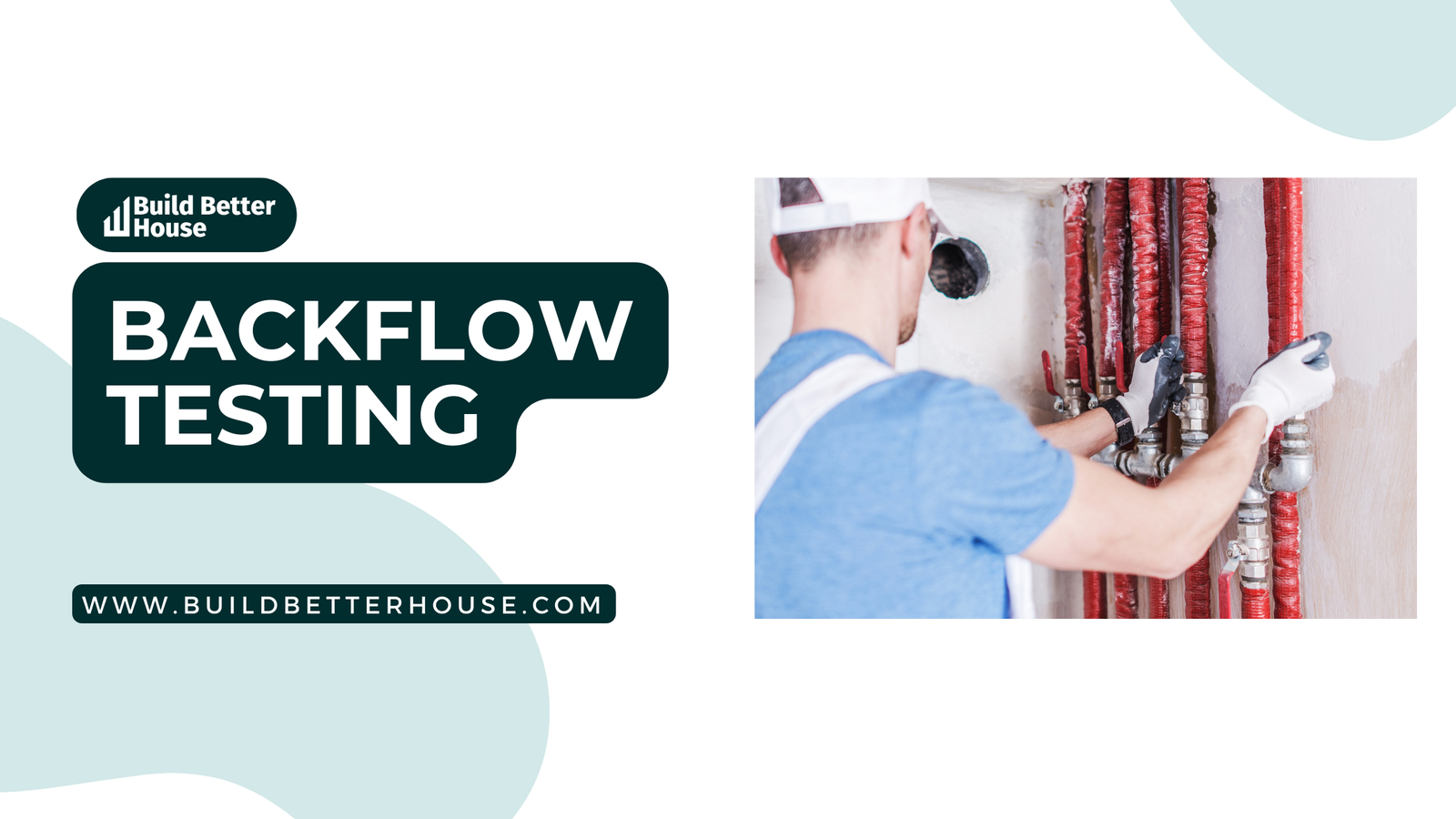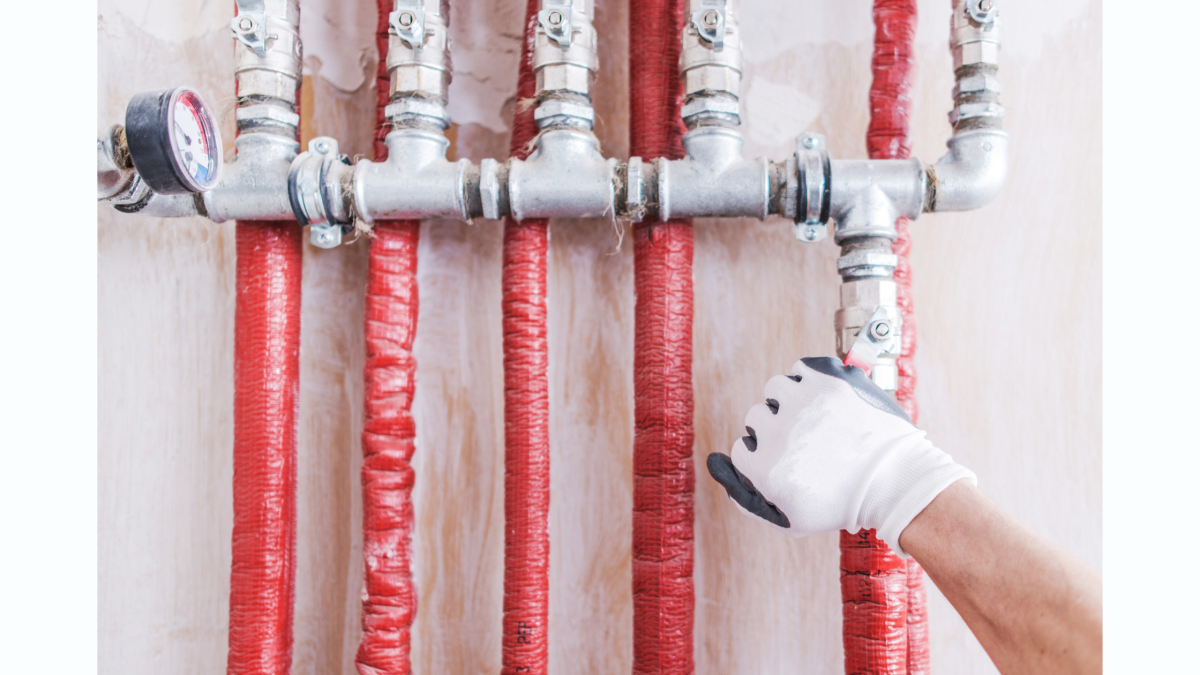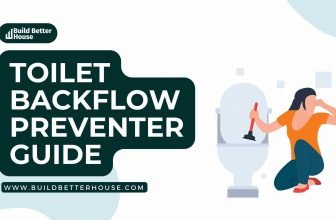Backflow Testing: Essential Steps for a Safe Water Supply

Backflow testing is a crucial process for safeguarding clean water supplies from contamination. This process ensures that water flows in the correct direction, particularly in systems connected to public water supplies and those utilizing water for irrigation. An important aspect of maintaining the cleanliness and safety of water sources, backflow testing focuses on identifying any issues that may cause the reverse flow of water, such as reduced or lost water pressure.
Understanding the importance of backflow testing is essential for all property owners, water system operators, and service providers who aim to protect their water supply from pollutants and contaminants. Regular testing and maintenance of backflow devices can help ensure the safety of water being used by consumers and maintain compliance with local regulations and industry-specific requirements.

Key Takeaways
- Backflow testing is vital for protecting potable water sources from contamination and ensuring proper water flow.
- Regular testing and maintenance of backflow devices are necessary to comply with local regulations and industry-specific requirements.
- Certified backflow testers play a key role in identifying hazards, implementing solutions, and maintaining the overall safety and quality of water supplies.
Importance of Backflow Testing
Backflow testing is essential for maintaining a safe and healthy water supply in your community. It helps identify any potential hazards that could lead to water contamination and allows water suppliers to address these issues before they become serious problems.
By regularly testing your backflow prevention systems, you ensure proper maintenance, which keeps the water supply safe from contamination. Contaminated water can pose severe health risks to individuals and may compromise the clean water supply, making backflow prevention a critical aspect of water system management.
Various contaminants can enter your water systems, which is why it’s crucial to identify any issues before they escalate. Typically, backflow events occur under two circumstances: backpressure backflow and backsiphonage. Both situations can result in pollutants entering the water supply and affecting the safety and quality of the water you rely on daily.
Apart from protecting public health, backflow testing plays an essential role in meeting building, fire, and plumbing codes enforced in your service area. This not only guarantees compliance with regulatory requirements but also assures proper functionality in the event of an emergency.
Keeping your water systems in check benefits various community projects that utilize clean water. Without proper backflow testing, the risk of waterborne diseases increases, putting people’s health at stake. Prevention measures save resources by avoiding potential cleanup efforts, treating illnesses, and managing public outcry.
Remember that as a steward of your community’s water supply, it is your responsibility to make sure proper backflow testing and maintenance are carried out. This will ensure a clean, healthy, and safe environment for everyone who relies on the water system in your area.
Testing Procedures and Frequency
Backflow testing is a crucial process to ensure the proper functioning of backflow prevention devices, which protect your drinking water supply from contamination. It is important to have a clear understanding of the testing procedures and how often they should be conducted.
Firstly, follow the recommended test procedures provided by your local water purveyor or relevant authorities. These procedures may vary depending on the device and specific requirements. In general, the testing process involves connecting hoses to the various test cocks, purging air from the hoses, and measuring pressure readings to assess the performance of the valves within the backflow prevention assembly.
As for testing frequency, it is typically recommended to conduct backflow testing on an annual basis. This ensures that your backflow prevention device is performing optimally to safeguard your water supply from potential hazards. However, certain situations may warrant more frequent testing, such as changes in water usage patterns or modifications to the plumbing system.
When it comes to conducting backflow testing, it’s essential to enlist the services of a certified backflow tester. This professional will have the requisite knowledge and expertise to perform the test accurately and effectively. They will also be well-equipped with the necessary tools and equipment to carry out the inspection.
In summary, understanding and adhering to the correct testing procedures, as well as the recommended testing frequency, is vital for maintaining the efficiency of your backflow prevention devices. By doing so, you’re taking important precautionary measures to protect your water supply and promote a healthy living environment. Remember to always consult your local water purveyor for specific guidelines and requirements in your area.
Certified Backflow Testers
As a certified backflow tester, you play a crucial role in ensuring the safety and integrity of water supply systems. By earning your certification, you demonstrate your commitment to professionalism and adherence to industry standards.
Certified backflow testers are skilled professionals who have completed a rigorous training program and successfully passed a certification exam. This process ensures that testers have the necessary knowledge and skills to effectively conduct tests on backflow prevention devices, helping to protect the public from potential contamination hazards.
When you choose to work with a certified backflow tester, you can have confidence in their ability to accurately assess the performance of backflow prevention devices. Certified testers are proficient in identifying potential issues and recommending appropriate corrective measures.
There are numerous backflow testing companies that specialize in providing quality services for both residential and commercial clients. These companies employ certified backflow testers and maintain strict compliance with local, state, and federal regulations.
Certified backflow testers can hold credentials from organizations like the American Society of Sanitary Engineering (ASSE), which offers nationally recognized certification programs in backflow prevention assembly testing, repairing, and surveying.
In summary, certified backflow testers and testing companies play an essential role in safeguarding public health by ensuring the proper functioning of backflow prevention devices. By hiring certified professionals, you can trust that your water supply is well-protected from potential contamination.
Common Backflow Hazards
In your efforts to protect your water supply from contamination, it is essential to be aware of the common backflow hazards. Backflow occurs when water flows in the opposite direction from its intended flow, potentially causing contaminated water to enter your drinking water supply. This can have serious consequences for health and safety, including illness and even death.
Several factors may contribute to backflow, which can occur in various settings, such as residential buildings, restaurants, and construction sites. In fire protection systems, for example, backflow may result from improperly installed or maintained devices, incorrect piping, or pressure surges. It is crucial to ensure that backflow preventers, such as the Double Check Valve Assembly (DCVA) or the Reduced Pressure Zone Assembly (RPZA), are properly installed and functioning.
Hazardous chemicals are a particular concern in backflow incidents due to their potential for posing significant health risks. These might include pesticides used in gardens, cleaning agents in restaurants and commercial kitchens, or chemicals stored in construction sites. It is necessary to monitor and safeguard water systems against cross-connections with these dangerous substances.
Storm drains can also contribute to backflow hazards, especially in heavy precipitation events where flooding occurs and stormwater runoff becomes contaminated. If this contaminated water enters your drinking water supply, it could result in various health issues. To minimize this risk, ensure that storm drains are properly maintained and functioning.
In establishments like restaurants, toilets and other sanitary fixtures can introduce bacteria and viruses into the water supply, posing potential health and safety threats. To prevent backflow from these sources, make sure to install air gaps, which are the most effective type of backflow prevention device, wherever appropriate.
Different states may have specific codes and regulations governing backflow prevention. Compliance with these laws not only helps safeguard public health but also ensures that your water supply remains uncontaminated. Keep in mind the requirements set forth by your local jurisdiction and stay up to date on any changes to these regulations.
In summary, understanding the risks associated with backflow is crucial for maintaining the safety of your water supply. Stay vigilant about potential hazards, adhere to local regulations, and take proactive steps to prevent backflow incidents in your property or business.
Industry-Specific Backflow Requirements
In the manufacturing industry, backflow prevention is crucial to protect your water supply from contamination by chemicals, heavy metals, and other hazardous pollutants. Regularly testing and maintaining your backflow prevention assemblies help ensure safe and clean water for your daily operations, as well as for your employees.
For restaurants and other food service establishments, you need to be particularly vigilant about the risks posed by fats, oils, and grease (FOG) entering the public water system. Implementing a cross-connection control program, including backflow testing, is vital for preventing FOG-related backflow incidents and maintaining compliance with your local water purveyor’s guidelines.
As a water customer, you have a responsibility to protect the public water supply from contaminants that may originate from your property. In many jurisdictions, backflow prevention assembly installation, testing, and maintenance are required for all residential and commercial properties. By fulfilling these obligations, you help maintain the safety and quality of the water supply for the entire community.
In the context of cross-connection control, backflow testing is a key element in preventing the contamination of your water supply. By having your backflow prevention assemblies regularly tested and maintained by certified technicians, you reduce the risk of waterborne illnesses and contribute to the overall safety and health of your community.
Remember, industry-specific backflow requirements may vary depending on your location and the nature of your operations. Always consult with your local water purveyor to ensure compliance with applicable regulations and guidelines.
Implementing Backflow Solutions
Implementing backflow solutions is essential to protect your potable water supply from contamination. It is necessary to understand the concepts of back siphonage and back pressure, both of which can cause polluted water to flow back into your plumbing systems and the public water system. By managing the risks associated with these issues, you can ensure safe, quality water for your daily use.
To get started, educate yourself on the backflow prevention devices available, as they are designed to protect against the adverse effects of back siphonage and back pressure. Familiarize yourself with the correct installation techniques and maintenance procedures to achieve optimal performance from these devices.
In order to maintain a high level of backflow protection, consider enlisting the help of experts in the field. Professional support can assist you in identifying potential hazards, selecting suitable backflow prevention devices, and establishing an effective backflow prevention program tailored to your specific needs. This will greatly contribute to safeguarding your plumbing systems, as well as ensuring the cleanliness of your potable water supply.
It’s important to stay informed about local regulations and requirements regarding backflow prevention, as they may vary depending on your location. Compliance with these guidelines is crucial for the continuing safety and functionality of your water supply.
Finally, don’t hesitate to reach out to your public water system provider or local regulatory agencies for more information and guidance on implementing backflow solutions. Maintaining an open line of communication with these entities will enable you to stay up-to-date on any changes to regulations, as well as receive expert advice and support in protecting your water supply.
By taking these steps, you can effectively implement backflow solutions and contribute to the ongoing safety and quality of your potable water.
Maintaining and Repairing Backflow Devices
Regular maintenance and service of your backflow devices are crucial to ensuring the safety and cleanliness of your water supply. Wear and tear on these devices can lead to water leaks, contamination, and even disruption in water service, potentially affecting fire hydrants in emergency situations, especially in highly populated areas like Los Angeles.
To maintain your backflow devices, it’s essential to log in and schedule routine inspections at least once a year. These inspections should be performed by a licensed backflow tester who can assess your device’s functionality and detect any issues before they become a more significant problem. This annual examination will help keep your water system clean and free of contaminants, as per the required local codes and regulations.
During the inspection process, the licensed professional may come across specific issues, such as:
- Potential leaks or irregularities in the device
- Malfunctioning valves or components
- Signs of wear or corrosion
In such cases, timely repairs are necessary to avoid contaminating the water supply or interrupting water service. Your licensed backflow tester will ensure that these repairs are completed thoroughly, using high-quality materials to help prevent any further issues down the line.
Moreover, in areas prone to water leaks or damage, like Los Angeles, it’s crucial to remain vigilant and monitor your backflow devices regularly. If you notice any signs of leakage or malfunction outside of your scheduled maintenance, contact a professional immediately to address the issue and prevent further complications.
By following these guidelines and consistently maintaining your backflow devices, you can ensure the safety and reliability of your water supply for yourself and your community.
Frequently Asked Questions
What are the common residential backflow preventers?
Residential backflow preventers are typically one of two types: pressure vacuum breaker (PVB) or double-check valve assembly (DCVA). Both devices serve to protect your home’s drinking water from potential contamination by preventing water from flowing back into the main supply.
How often should commercial backflow preventers be tested?
For commercial properties, it is generally recommended to test backflow preventers annually. Regular testing ensures the devices are functioning properly and minimizing the risk of contamination to the public water supply.
What is the approximate cost of backflow testing?
The cost of backflow testing varies depending on factors such as the type of device, its size, and location. It is best to contact your local certified backflow tester for a more accurate estimate based on your specific needs.
How long does a typical backflow test take?
A standard backflow test often takes around 30 minutes to an hour, depending on the device and accessibility. However, more complex systems may require additional time for testing.
Why is regular backflow testing necessary?
Regular backflow testing is necessary to ensure the protection of local clean water systems and to comply with local regulations. Over time, wear and debris can limit a backflow preventer’s effectiveness, so testing helps identify any issues before they lead to contamination or other hazards.
What steps are involved in a backflow test?
During a backflow test, a certified tester will:
1. Review the installation and accessibility of the device.
2. Shut off the downstream valve and observe the device for any leaks.
3. Test the proper functioning of the device’s check valves and relief valve.
4. Record test results and provide a report.
5. If necessary, make recommendations for repairs or replacement.
By engaging in scheduled backflow tests, you can maintain the integrity of your water supply and protect public health.






